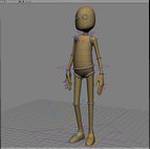
Frickin finally!
This little animation - that I will soon publish with a song compliments to Gabriel Lucien - will be my first of hopefully a series of techniques that will open doors.
I did it totally on my own accord to study a number of topics, probably a couple of weeks of manuels, tutorials and blood, sweat and tear mainly focused on two topics. One is procedurally created and animated geometry in ICE, Softimage; and the other is GPU rendering with Alembic inside Unreal Engine. None of these things I knew at all before starting the project.
So far... Unreal Engine is still in development, but holy cow can you do potentially a lot in there.
But by far ICE is way simpler to use than Blueprint......
This has been a long experiment. I spent a long time trying to render out this thing. Once I followed a tutorial on how to make procedural stairs, I perfected it and made a pinecone. After that I learnt how to import sound from sound files into Blender, cook it to geometry, and isolate frequencies in Audacity. Once I got that done, learnt how to export animation from Blender through FBX, then got that into SI to drive my pinecone in a somewhat procedural and creative way. Then I learnt how to use Alembic files in Unreal Engine, which is free, to then try render it out. I learnt that I can't cache large files, or have all the material clusters dissappear, it will crash UE. Later I learnt a lot about Blueprint, shading, and how to render realtime - also.. how to render a sequence with the textures. UE has a feature missing where media player texures will not render with the frame count, but with a timer - and if your card is rendering NOT at real time, they textures render really quickly meanwhile everything else doesn't. I also figured out that Motion Blur does not apply to Alembic Cache files. I also learnt that Virtual Dub with Avisynth with MV Tools, what I use for post motion blur, also finds it tricky for fast moving chunks. Also, Helix YV12 codec kinda sucks. Anyone know of any other yv12 codecs out there? I spent all day today, well afternoon, trying to find a way around the texture issue with UE, finally opting out of the new Media Player system for a Flipbook system.. Which was alright. In the process I rendered it in the dark, and thought.. HEY! That looks great. May as well splice it in.
I finally edited and did a little post in Blender and viola!
I'll be publishing the video soon.

































































